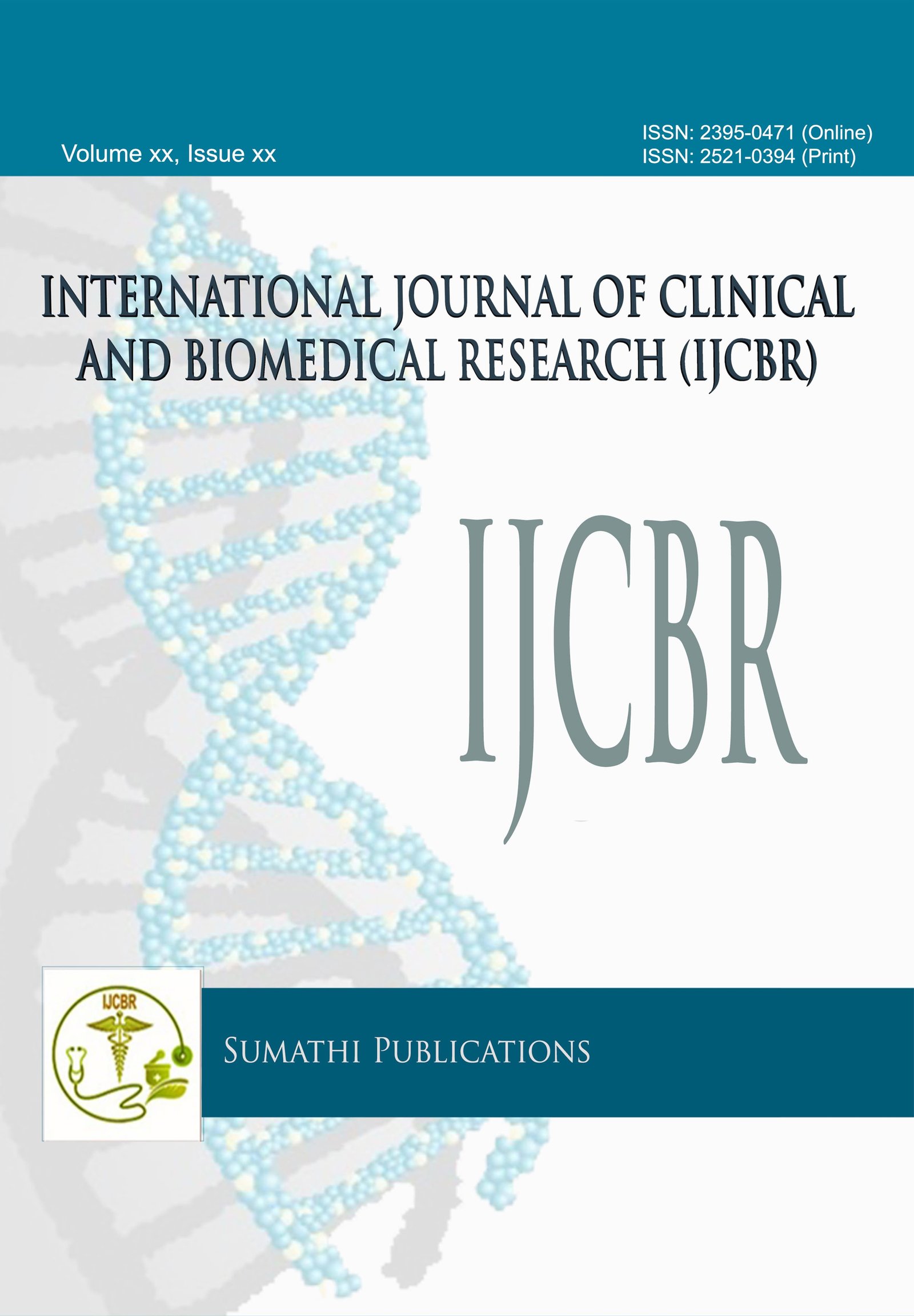CLINICO-INVESTIGATIVE PROFILE OF PATIENTS WITH DIABETIC FOOT IN A RURAL TERTIARY CARE CENTRE OF MAHARASHTRA
DOI:
https://doi.org/10.5455/ijcbr.2018.42.15Abstract
Introduction: The present study was aimed to study clinic-investigative profile of foot lesions in diabetics in patients presenting in Pravara Rural Hospital, Loni. Materials and Methods: This prospective cross sectional study was undertaken in 50 patients carried out over a period of 2 years. Patients, irrespective of their age and gender, admitted in the inpatient department of surgery with Diabetes mellitus having foot problem and consenting for taking part in the study were included. All patients were evaluated by taking detailed history, clinical examination and necessary investigation done. Results: Most patients present with diabetic foot lesion were in 7th decade of life. females were more commonly affected with male to female ratio 1:1.5. Ulcer was the common lesion seen here which was present in 24(48%) patients while abscess seen in 3 (6%) patients, was the least common lesion. There were many anaemic patients (74%) in current study. Staphylococcus aureus was the commonest grown organism form the pus sample of foot lesions. Of the 50 patients, only 24 (48%) were known diabetics. Also, 18 (36%) patients were known smokers, 12 (24%) were alcoholic. Most patients (35 i.e, 70%) walked bare foot while only 15(30%) patients were using footwear. Cardiovascular diseases were common (10 i.e, 20%) associated conditions. Peripheral neuropathy was present in 21 (42%) patients. On staging the patients according to Wagner staging, most of the patients belonged to stage III (23) and IV (14). Doppler study in select patients revealed that 8 (16%) patients were detected as impaired blood flow in peripheral vessels, 3(6%) patients showed complete stenosis and 5(10%) patients showed partial stenosis. Conclusion: Diabetic foot lesions were common in elderly patients. The most common presentation of foot lesions was ulcer. The foot lesions were associated with poor blood sugar control, peripheral neuropathy, cardiovascular diseases, anemia, smoking and alcohol addiction. Most patients belonged to Wagner stages III and IV. Staphylococcus aureus was the commonest grown organism form the pus sample of foot lesions .
Keywords: Foot lesions; Diabetes mellitus; Staphylococcus aureus; Cardiovascular diseases.
Downloads
Downloads
Published
Issue
Section
License
The journal allows the author(s) to hold the copyright without restrictions and will retain publishing rights without restrictions.
The submitted papers are assumed to contain no proprietary material unprotected by patent or patent application; responsibility for technical content and for protection of proprietary material rests solely with the author(s) and their organizations and is not the responsibility of the journal. The main (first/corresponding) author is responsible for ensuring that the article has been seen and approved by all the other authors. It is the responsibility of the author to obtain all necessary copyright release permissions for the use of any copyrighted materials in the manuscript prior to the submission.
What are my rights as an author?
It is important to check the policy for the journal to which you are submitting or publishing to establish your rights as
Author. Journal's standard policies allow the following re-use rights:
- The journal allows the author(s) to hold the copyright without restrictions.
- The journal allows the author(s) to obtain publishing rights without restrictions.
- You may do whatever you wish with the version of the article you submitted to the journal.
- Once the article has been accepted for publication, you may post the accepted version of the article on your own personal website, your department's website or the repository of your institution without any restrictions.
- You may not post the accepted version of the article in any repository other than those listed above (i.e. you may not deposit in the repository of another institution or a subject-matter repository) until 12 months after publication of the article in the journal.
- You may use the published article for your own teaching needs or to supply on an individual basis to research colleagues, provided that such supply is not for commercial purposes.









